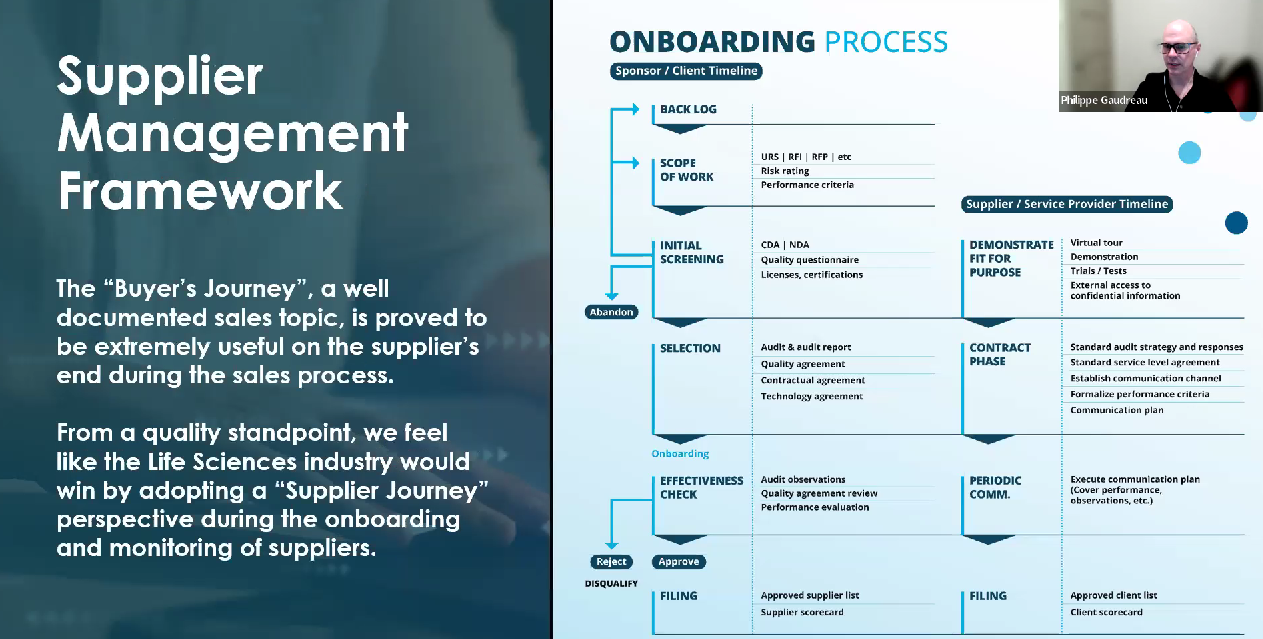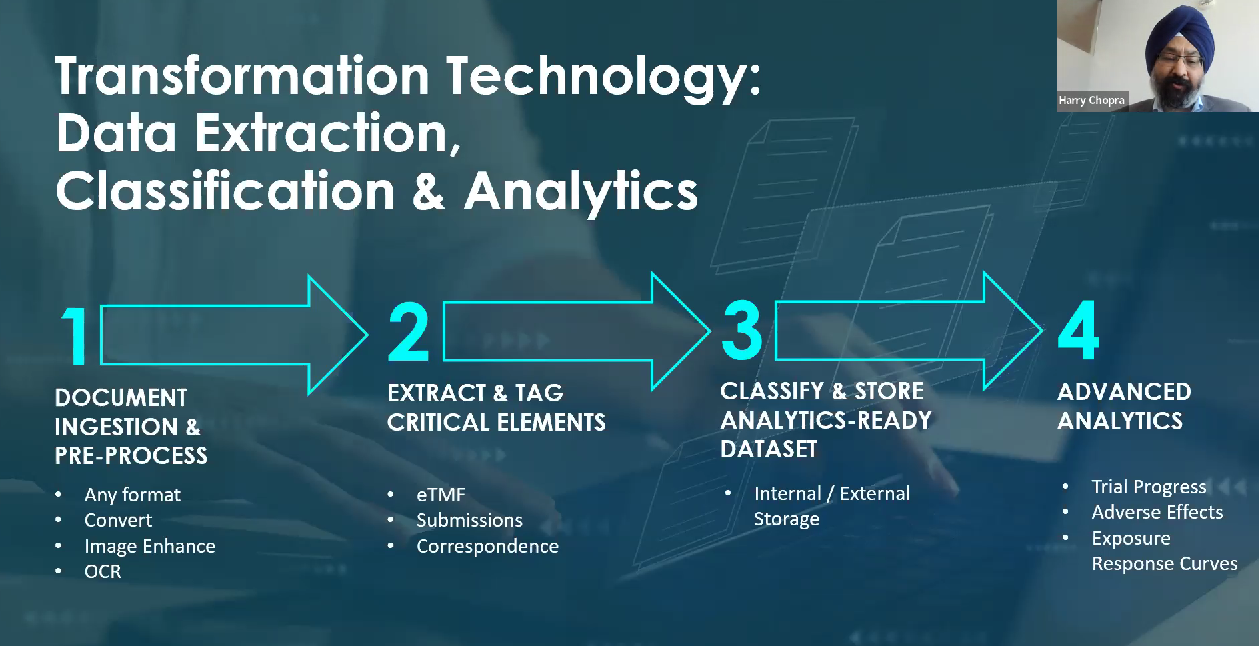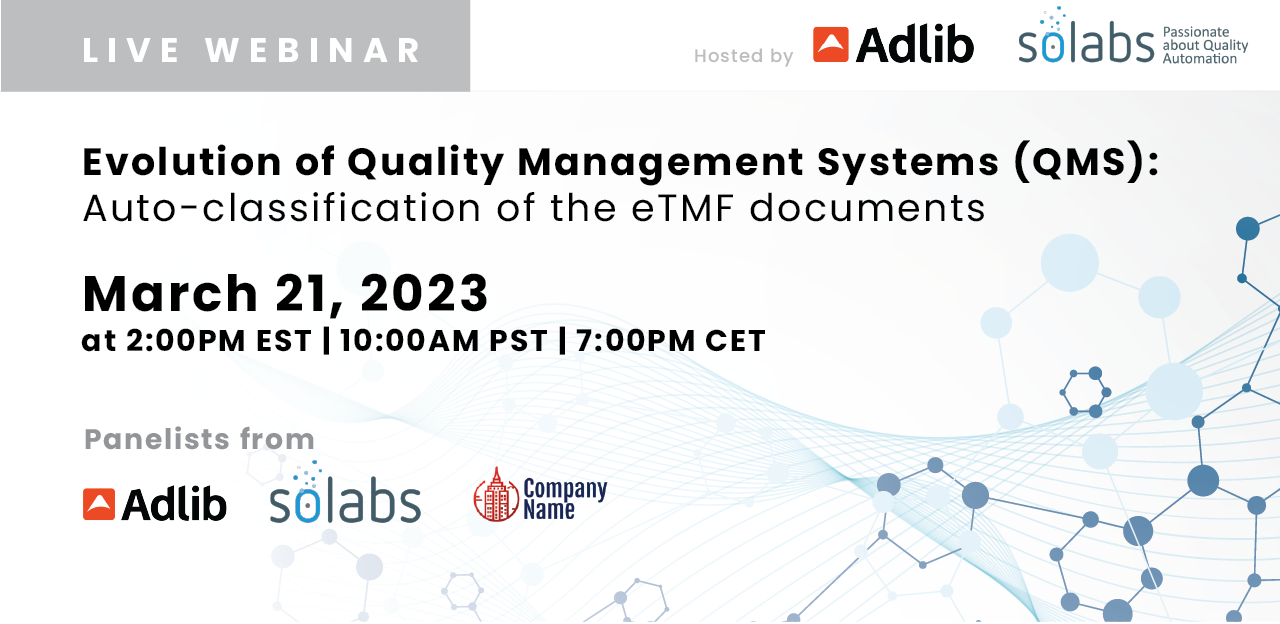What Are The Emerging eQMS Requirements And How Should Providers Prepare For Them?
We sat down with Philippe Gaudreau from SOLABS, a software company that specializes in eQMS for Life Sciences, to discuss the emerging requirements for QMS, including supplier quality management, controlled documents, integrated reporting, and online assessments.
Philippe has over 15 years of experience in the Life Sciences industry and is an expert in building and implementing document control systems. He has designed quality management systems that are built to scale and grow alongside Life Sciences organizations while ensuring a controlled, validated, and reliable quality system.
During our interview, Philippe shares how SOLABS are preparing to meet these emerging requirements and provide their clients with an efficient and effective QMS platform.
What Are the Critical Core Functions an eQMS platform should provide?

Document Control: In my perspective, the foundation of a QMS must be document control. It allows for the creation of a set of procedures, business processes, work instructions and all the elements that ensure a controlled, well-built, and reliable quality system. You can think of the document section in a QMS as a numeric library where documents are stored and maintained in a controlled environment.
Audit Management is part of QM10 essentials as one of the main aspects of a QMS, either as a sponsor of a supplier, internal audits, audits from clients and partners, from health authorities, etc. Are a key element to help companies improve and become better organization. It is also a key component in Supplier Quality Management or SQM.
Access Control & E-Signatures: To be considered a validated and controlled environment, a quality system must meet 21CFR Part 11 requirements. The inclusion of e-signature also adds a layer of complexity versus the standard login only type systems when it comes to SSO integrations with Azure AD and other external SSO providers.
Another key requirement is maintaining an Audit Trail.
Reporting and analytics: Trending and tracking is critical to any quality management system. At SOLABS, we don’t consider ourselves experts in the field of reporting, and we’ve partnered with companies that specialize in this area, such as Nexgen Analytics to create reports hand in hand with our customers.
Training: Management of training records is another key element of a QMS. Training on SOPs and other organization documents, corporate training, and more and more competency checks.
Quality Processes: Finally, the QMS must be able to manage changes and exceptions. This includes Change Control, CAPA, Deviations, Laboratory investigation, Complaints and more.
In the case of our software, we wanted to reduce the complexity of learning how to navigate the menu for all those different quality processes, so they are all built with the same look, feel, and functions. The changing components are the project workflows, and the fields users must fill out, but once a user has worked on a process once, they are able to work on any process within QM10.
Onboarding a QMS is a complex project and I believe it is important to divide this project in multiple milestones over a period of time. Our typical projects involve setting up the QMS foundation, which we call QM Essentials, including the Document Control, Audit, and Reporting components first. Then, our clients will enable training records management and additional quality processes in years 2 and 3, when their organization is ready to leverage these processes. This also helps alleviate the challenge of learning to use the software, both for administrators and users.
What Are the Emerging Requirements for QMS and How Is SOLABS Preparing to Meet These Requirements?
Supplier Quality: In 2021, the Life Science benchmarking and advisory firm Gens & Associates completed a survey called Quality Beyond Compliance. One of the top 5 learning points they highlighted was that supplier and risk management are both priorities driven by the pandemic experience and will be a key patient & customer focus moving forward.

One of the necessities of an eQMS regarding supplier management is how you can give suppliers access to documents, manage their training if needed or have them submit quality events. It is mandatory to have a type of account that gives restricted access to documents or information within the software while still having the ability to act on anything assigned to them. In our case, we have designed an external account type that cannot browse through documents other than those directly assigned to them and are unable to perform any search functions. Outside of this, they can be assigned a training activity, a review or approval task in the document section or a process task.
Recently, we have begun working on defining the Supplier Journey. The Onboarding process is well-defined within the industry from a client perspective, but there is no evidence of a standardized practice to onboard the client from the supplier’s end. A lot of our clients are the suppliers of other companies, so they must manage both sides of the spectrum. We hope to introduce processes which provide a better balance of responsibilities between Suppliers and Clients as well as an increase in the quality levels from the supplier output.
Controlled Documents: Some of our clients with manufacturing capabilities must manage controlled copies of documents. For this, they develop ways to mark their pages such as punching numbers in their printed documents or stapling them with individual codes. While this is not very time-consuming for a single document, repeating this operation over hundreds of documents a day leads to quite a bit of time invested in controlling copies for our clients.
For this reason, we are working in conjunction with Adlib and our clients to figure out the best way to include controlled copies within our software. Printing documents that match the controlled copies requirements of our clients will save them time while reducing the risk of human error.
Integrated Reporting: As we discussed earlier, reporting is a core aspect of a QMS. At SOLABS, we have determined that the best way to provide this to our clients was through strategic partnerships. Our responsibility is to establish datasets covering all areas of QM10 and publish those datasets in Excel and SSRS reports, covering all the basic reporting needs.
Then, our partners work hand in hand with our clients to publish advanced analytics through Excel and SSRS. This helps ensure that our clients have the exact reports they need while also allowing us to observe trends in their reporting needs.
Online Assessments: We have recently added Online Assessment capabilities for free to all our clients that use QM10 to manage their training records. This allows assessments such as quizzes or exams to be linked to training activities.
With online assessment, our clients are able to demonstrate that their employees have really mastered their training content and remove the possibility of users signing off training for documents they have not read, for example.
What Are The New Developments In Document Transformation?
Harry Chopra, Chief Client Officer, Adlib Software:
As Adlib works with SOLABS to create the foundation of document management, the natural step for us was to think about how do we extract intelligence and drive efficiencies for a regulatory process, as an example.

We've been working on Artificial Intelligence program which leverages natural language processing (NLP) and machine learning (ML) algorithms that can now read these documents that are rendered into readable and searchable PDFs, and then automatically classify them against a schema. The first piece of work we have completed is against the Trial Master File, where we can now automatically classify documents against the schema and verify if it is complete. This allows us to integrate this capability into SOLABS architecture.
Once we have this information where you move from unstructured data to structured data, then you can generate advanced analytics, such as how the trial is moving along, or capture adverse events.
What we have found by talking to our mutual clients is that we can create really great efficiencies.
Watch the complete interview here.





